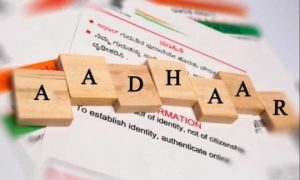Credit Card Statement: If you want to avoid any unnecessary interest charges, keep a track of the ‘payment due date.’
Apart from spotting errors in your name, address and transactions made, you are also required to track down all unauthorised charges, due dates, billing errors, etc on the statement before you pay the bill.
At the end of every billing period, banks send an account statement to credit card holders. The statement summarises the usage of a card during the given period, but if you are new to credit cards, you might find it difficult to understand the details of the statement. It is important for credit card users to understand the fine print of the statement so that they don’t get overcharged by the bank or end up with more debt. Apart from spotting errors in your name, address and transactions made, you are also required to track down all unauthorised charges, due dates, billing errors, etc on the statement before you pay the bill.
Here are the 6 things you should pay attention to:
Read more:Aadhaar Card Users Alert! Aadhaar fine can go up to Rs 1 crore; here’s how to avoid it
Statement date: It is when your credit card statement is generated and it is used in the calculation of late payment fee. In case you miss out on paying your dues, the bank will charge interest and this interest will be calculated while taking your statement date into account.
Payment due date: If you want to avoid any unnecessary interest charges, keep a track of the ‘payment due date.’ This is the date by which your bank looks forward to receiving payment on the billed amount without any additional charges. A credit card user is advised to avoid postponing payment as there could be a lag in the date and time of the payment made and the lender receiving the payment.
Billing cycle: This time is basically the period between two consecutive statement dates, which is generally 30 days. A billing cycle is a time period for which the statement is generated. All transactions made using the credit card during the billing period will be reflected in the statement. If any interest penalty or late payment fee is levied, it will also be reflected in the statement. Any amount received towards payment of the bill or any returns on failed transactions will also get featured.
Grace period: According to the RBI rules, banks can impose late payment charges on a card if the amount due is not paid for more than 3 days from the payment due date. If not paid within the grace period, the bank is free to impose interest and the payment will be calculated from the due date.
Read more:TAN vs PAN: What is Tax Deduction Account Number? Know how to apply
Total amount due: It represents the total amount due in a billing cycle period. Apart from the transactions made in the previous billing cycle, total amount due will also include interest applicable or any late payment charges, annual charges, service charges, and other transactional fees.
Minimum amount due: It is the minimum amount the credit card holder has to pay on their bill by the payment due date. This amount is paid to avoid being charged a late fee, which is a percentage of the outstanding amount (typically 5 per cent) that needs to be paid.





































